Formation of Impact Crater Process
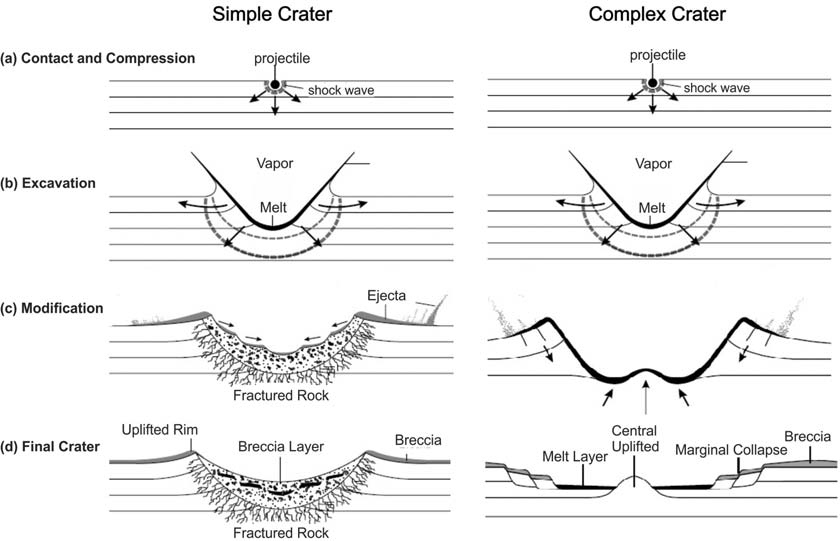
Impact craters are an ubiquitous geologic process across the entire solar system, found on all rocky terrestrial bodies, asteroids, and the moons of the outer solar system gas giants (density of impact craters vary from very few to dense coverage of the surface).
Their formation is chaotic, and can last for time periods from a few seconds to a few minutes (dependent on impactor size and velocity, and impactor/target rock properties). The formation of an impact crater, although continuous, is categorized into three stages; contact and compression, excavation, and modification.
1. Contact and Compression Stage
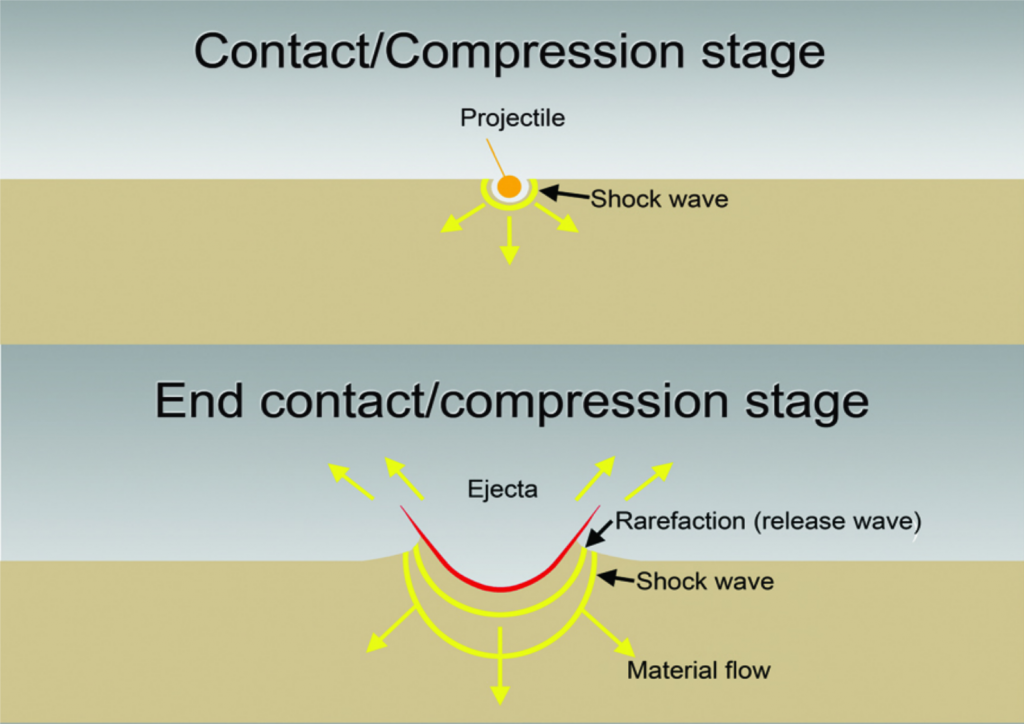
The point of contact between the impactor (meteorite or comet) and the surface of the planetary body (target rocks) is the beginning of the first stage of impact crater formation known as the compact and compression stage. All of the kinetic energy from the impactor travels through the target rocks and back into the impactor as a shock wave. As the shock wave travels through the target rocks it partitions into kinetic energy, putting the target rocks into motion and initiates the formation of a depression in the ground. The kinetic energy later converts to internal energy, which leads to shock metamorphism. During this process, the shock waves that passed through the impactor reflect off its top and are reflected back into the target rocks as a rarefaction/release wave. At this point, the process transitions into the second stage; the excavation stage.
2. Excavation Stage
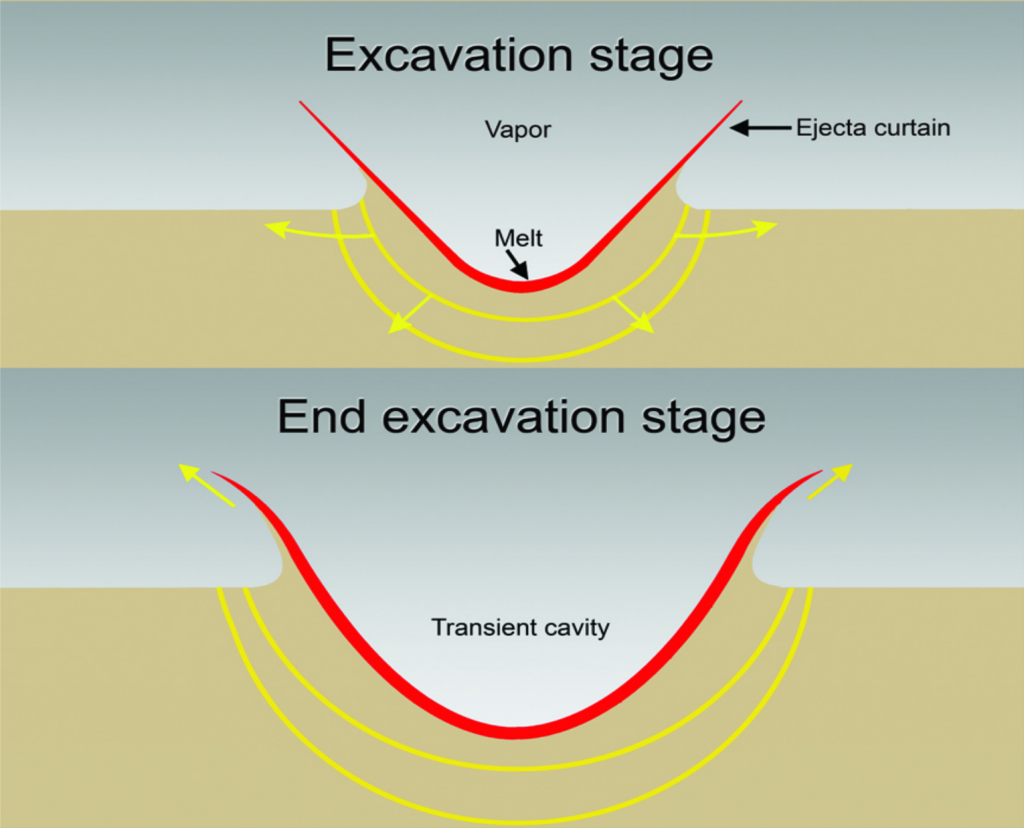
3. Modification Stage
Following the contact and compression stage, the passage of the rarefaction wave through the target rocks, in conjunction with the initial shock wave, produces a wave field that puts rocks in motion known as the cratering flow-field. The cratering flow-field results in the ejection of material in the upper and outer regions of the crater and downward displacement of material in the lower and central regions of the crater. From the excavation and displacement of target rock material, an open bowl-shaped depression known as the transient cavity. Once the energy within the cratering flow-field is no longer sufficient to excavate or displace material within and outside the transient cavity, the transient cavity begins to collapse due to instability from rock material strength and gravity. This marks the end of the excavation stage and beginning of the final stage; the modification stage.
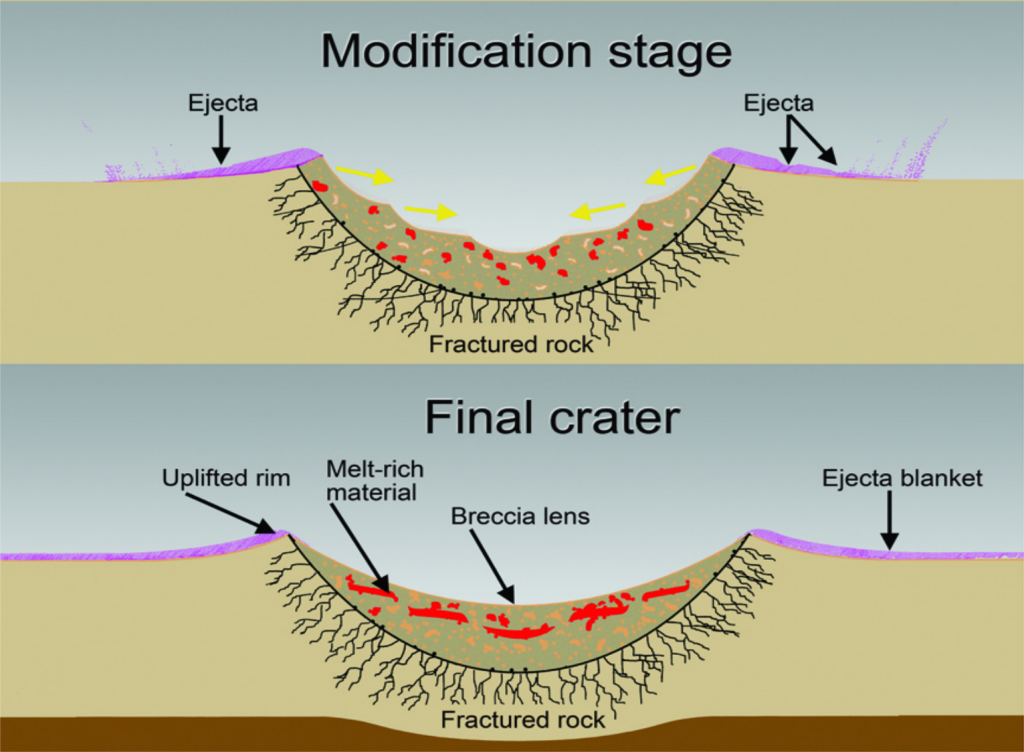
The modification stage involves the formation of the final crater and is dependent on the gravitational acceleration of the planetary body, the cohesive strength of the target rocks, and the existence of pre-existing topography.
The gravitational acceleration on the Moon is 1/6th the strength of Earth, meaning the final crater will experience less gravitation collapse. It is why lunar craters have a lower depth/diameter ratio, because lunar craters can retain more of their original diameter than terrestrial craters, and experience less crater infilling and crater wall collapse.
Crater Morphologies
The Moon is the perfect natural laboratory for studying a variety of impact craters and their morphologies. The absence of an atmosphere and inactivity of all destructive geologic processes, with the exception of micro-meteorite bombardment, has allowed the preservation of lunar impact craters, with morphology’s ranging from pits, simple, complex, peak-ring, and multi-ring basins.
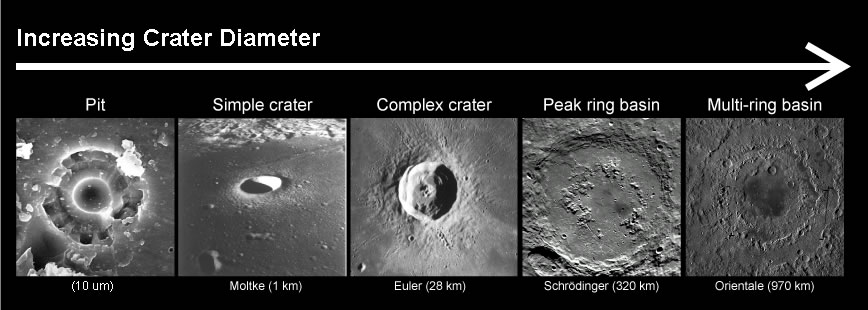
Simple Craters
A pit is a nano- to micro-sized impact event that is not visible to the naked eye and requires the use of high-powered microscopes and electron micro-probe instruments. A simple crater is the morphology that is common for all small impact craters (<10 km in diameter), with a bowl-shaped structure with little to no crater wall collapse. Simple crater floors are covered in material that was infilled from crater walls, usually a mixture of non-melt bearing monomict (fragments of one target rock) and polymict (fragments from more than one target rock) breccias, and glass-bearing impact breccias.
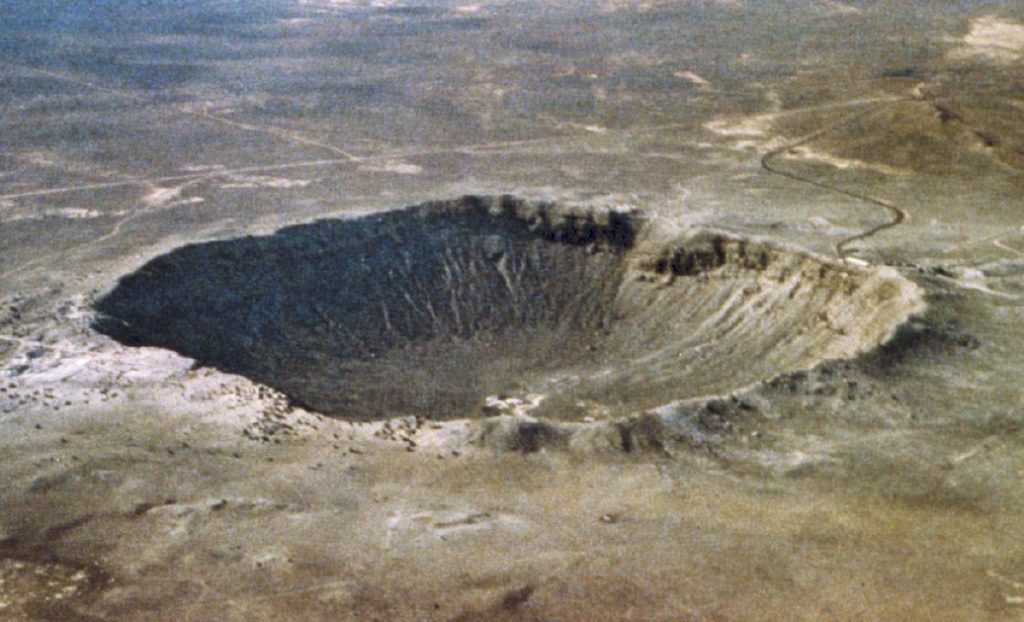
The Moon is covered in simple craters ranging from sizes down to a few hundred meters to ~11 km in diameter. On Earth, the most well-preserved simple crater is the Barringer (a.k.a Meteor) crater in Arizona, exhibiting overturned rims (rock layers flipped upside down along the edge of the crater), collapsed walls, and an in-filled floor with non melt-bearing and melt-bearing breccias.
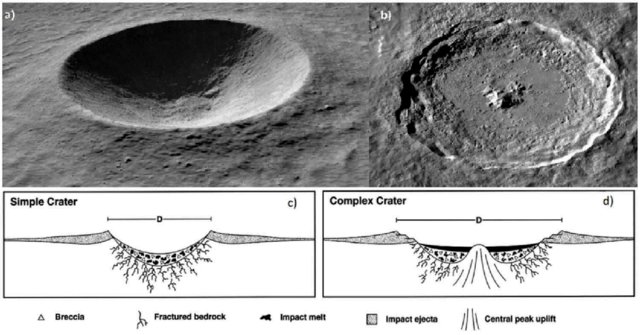
Complex Craters
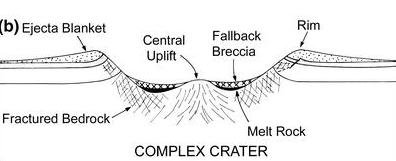
Complex craters are larger than simple craters with a smaller depth/diameter ratio. What complex craters exhibit that is not found in or around simple craters are an uplifted crater floor, which either forms a central uplift, a patch of hummocks and hills, a peak-ring, or a pan flat crater floor. The central uplift structure comprises shocked, brecciated, and heavily deformed target material, and the stratigraphic uplift becomes systematically greater with an increase in final crater size. On the Moon, the most iconic and well-preserved complex crater (that is visible from the surface of Earth) is Tycho Crater, with well defined impact rays and an ~2 km high central peak.
Peak-Ring and Multi-Ring Basins
If the central peak of a complex crater exceeds a certain size, the crater walls collapse inwards creating a hydrodynamic flow of material out from the crater floor center. This generates a rugged mountainous ring structure close to the center of the impact crater epicenter known as a peak-ring. Peak-rings comprise heavily brecciated material, as indicated by gravity and seismic velocity low data. For abnormally large impact events, multiple peak-rings can form within an impact crater or basin. These are extremely rare on the Moon and in our solar system. The only lunar example is Mare Orientale.
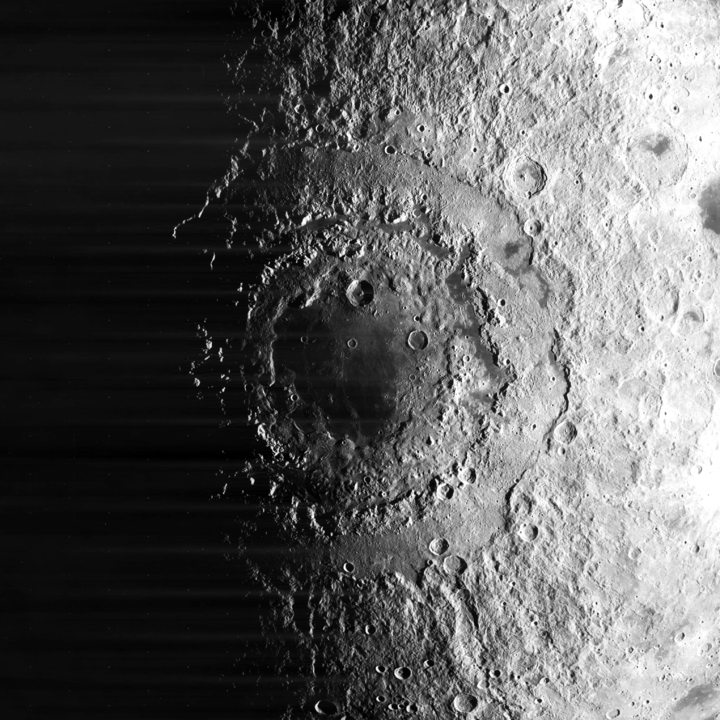
References
- Glass, B. P., & Simonson, B. M. (2013). Impact Crater Formation, Shock Metamorphism, and Distribution of Impact Ejecta. In Distal Impact Ejecta Layers (pp. 15-75). Springer, Berlin, Heidelberg.
- Grieve, R. A. (1990). Impact cratering on the Earth. Scientific American, 262(4), 66-73.
